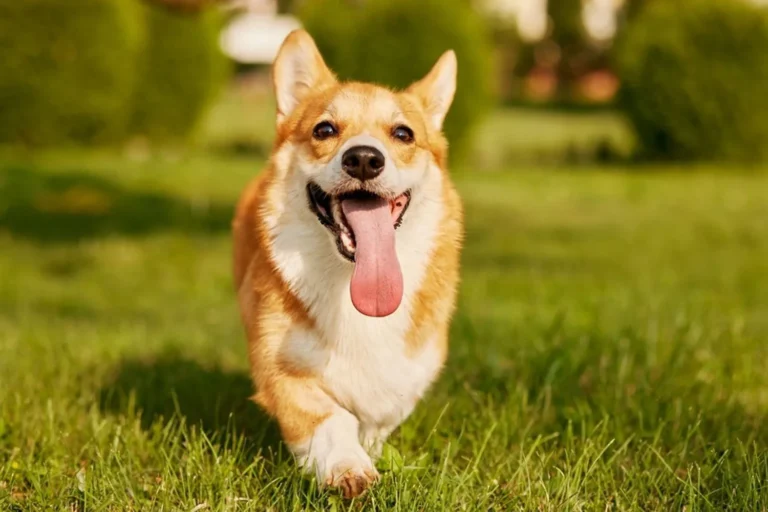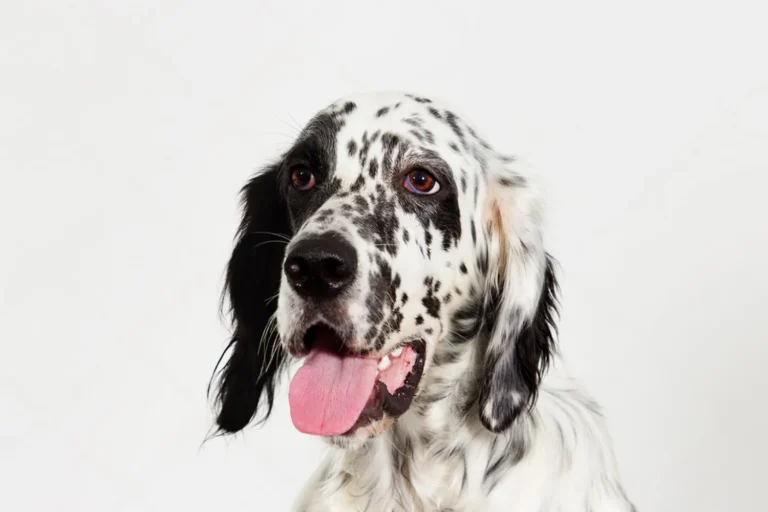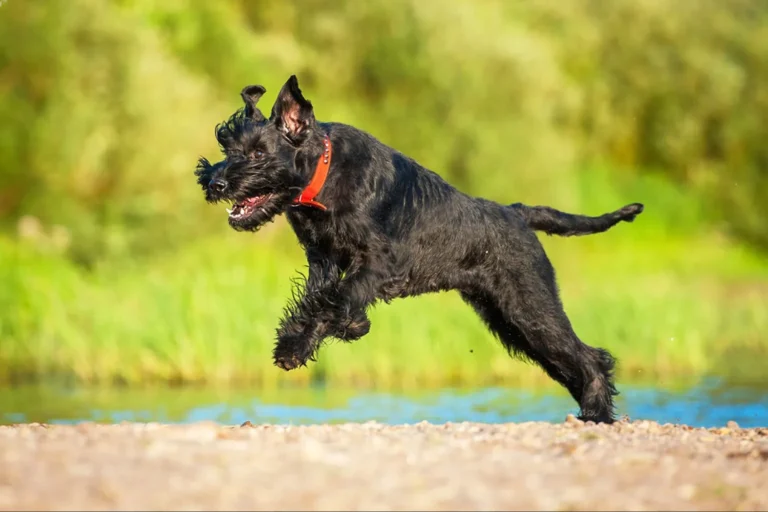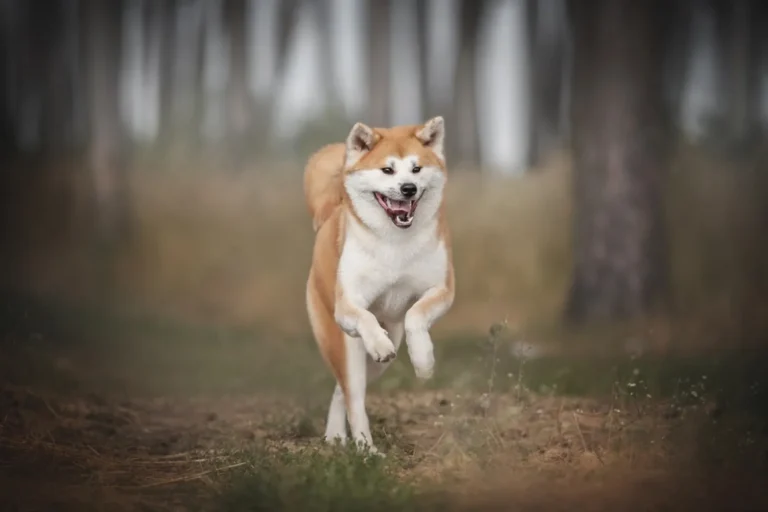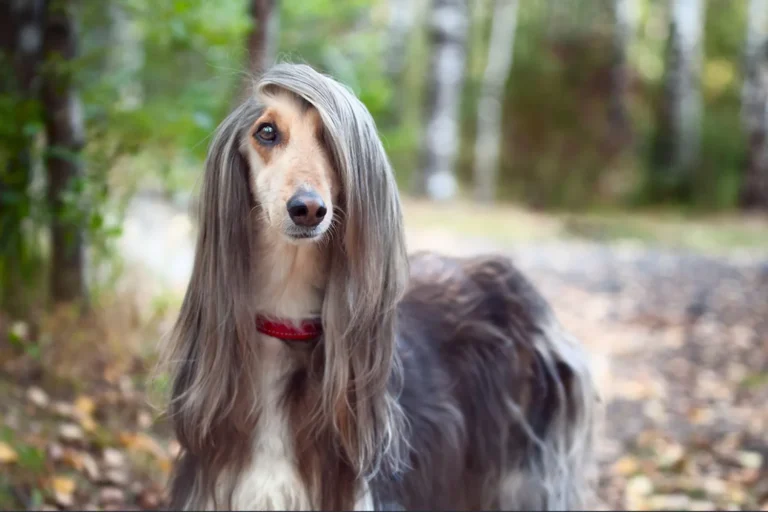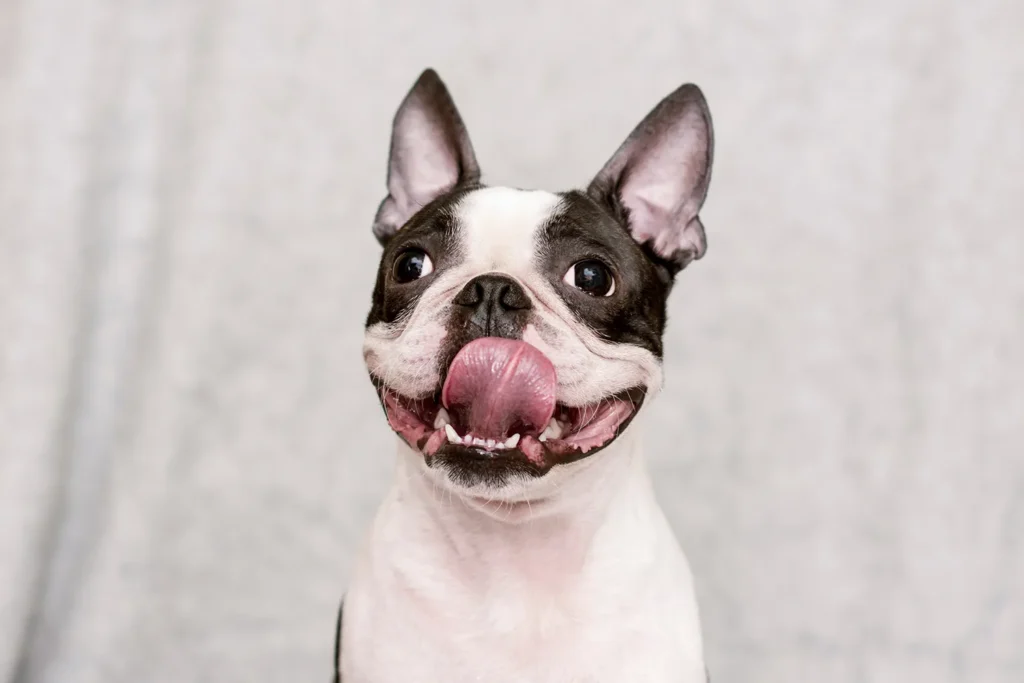
I’ve lost count of how many times a small, loyal shadow has followed me from room to room, just happy to be near. These little companions are big on affection and fit beautifully into all kinds of homes apartments, busy family houses, you name it. When I brought home my first tiny tail wagger, he curled up on my lap as if he’d been there his whole life. They’re wonderfully adaptable, quick to bond, and just as content on a quiet couch day as they are tagging along for short adventures.
If you’re new to dogs, start with a simple routine: short daily walks, regular potty breaks, and a cozy crate or bed that feels like a safe den. Keep training positive and bite sized treats and praise work wonders. I always keep a soft harness ready, a couple of chew toys to protect the furniture, and schedule playdates to build confidence. And if you’ve had dogs before, you’ll appreciate how eager these little ones are to learn new tricks and snuggle afterward. Give them your time, a dash of patience, and a warm lap, and they’ll pay you back with endless love.
What is the history and origin of the Boston Terrier?
Every time I see that tuxedo coat trotting down a city sidewalk, I think about how far this little charmer has come. The Boston Terrier’s roots go back to the late 1800s, when breeders in Boston began crossing sturdy bulldogs with the now extinct white English terrier. Some enthusiasts point to a specific dog an English import named Judge as a key ancestor who helped set the type. However the exact mix unfolded, the result was a compact, clever companion with plenty of grit.
By 1889, owners and breeders were organized enough to form the American Bull Terrier Club. Early on, these dogs were even called American bull terriers, but Bostonians insisted on giving their hometown credit. In 1891, the breed got its official name: the Boston Terrier. Just two years later, in 1893, the American Kennel Club recognized the breed, and the Boston Terrier Club quickly followed to guide its development.
The earliest Bostons were bred for pit fighting hard to imagine when you meet their sunny, social descendants today. Over time, fanciers bred away from the rough and tumble origins and leaned into a companion temperament: bright, affectionate, and eager to make friends. In the early 1900s, the breed standard was refined to include those distinctive colors and markings think black and white, brindle and white, or seal and white that earned them the nickname “the American Gentleman.” I’ll never forget a little Boston named Tux I met on Beacon Hill, strutting in a bow tie like he had a dinner reservation.
If you’re considering a Boston, remember their history explains a lot: they’re sturdy for their size, quick to learn, and happiest by your side. Markings are part of the look, sure, but personality is the real hallmark of the breed. A breeder I spoke with in Massachusetts once told me, “We bred them to win hearts, not fights” and that’s exactly the spirit you feel when a Boston curls up next to you on the couch.
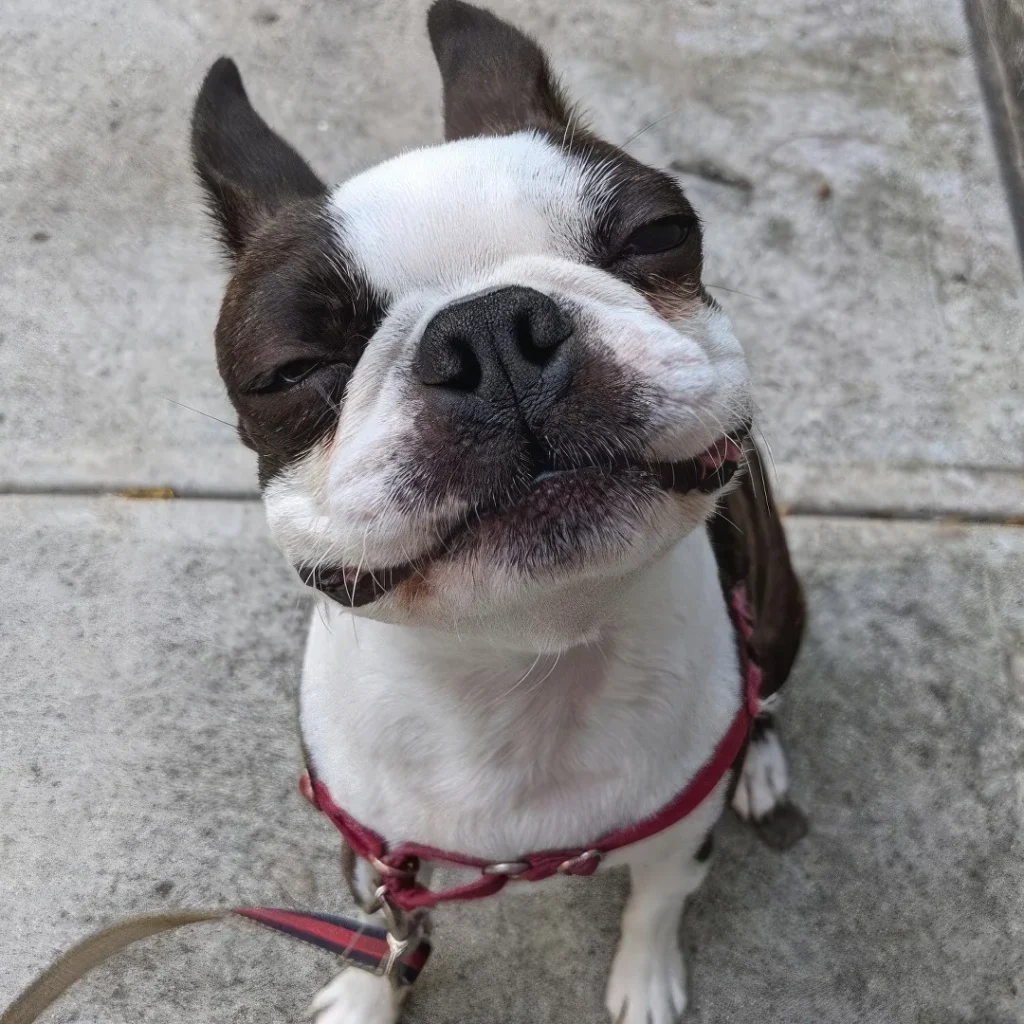
What Is the Boston Terrier Breed?
Picture a little dog in a crisp tuxedo, trotting around like it owns the room that’s a Boston Terrier. Their sleek “jacket” markings are so dapper they earned the nickname American Gentleman, and honestly, it fits. They might be small, but don’t let that fool you: they’re compact, sturdy, and surprisingly muscular. The first time I picked up a friend’s Boston, I expected a featherweight nope. More like a neat little kettlebell with a wagging tail.
Boston Terriers are part of the brachycephalic family, which is a fancy way of saying they’ve got those charming flat faces and short muzzles. That look comes with a few quirks. They can snore like tiny bulldozers (my old Boston could out snore me), and they don’t love extreme heat. I always suggest a harness instead of a collar to reduce pressure on the neck and throat, and on hot days, keep walks short and shady. Their big, expressive eyes are heart melters, but also delicate avoid pokey plants on trails and do a quick face wipe after play.
As for their roots, Boston Terriers were developed from a mix of breeds, including the Pit Bull Terrier, English Bulldog, the now extinct English White Terrier, Boxer, English Bull Terrier, and other terriers. That cocktail explains a lot: the terrier spark, the bulldog sturdiness, and a people loving personality that makes them natural companions. They’re eager to please, quick to learn, and a little bit clownish. Positive training goes a long way I used to keep short training sessions before dinner, and my Boston would practically do calculus for a kibble.
If you’re looking for a cheerful, smart, and stylish sidekick who’s equally happy strutting down the sidewalk or curling up on the couch, the American Gentleman might be your perfect match. Just bring a soft bed, a gentle routine, and a sense of humor. They’ll bring the charm.
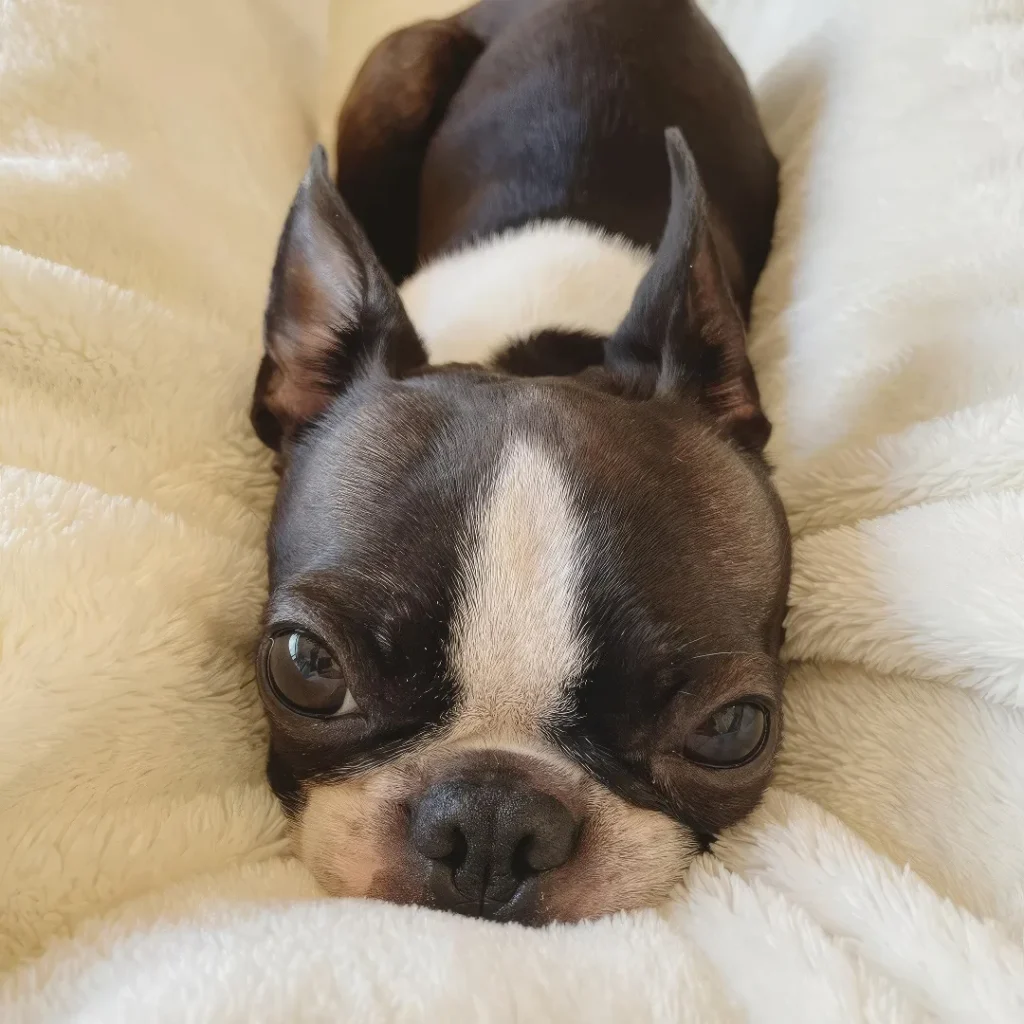
Who Is a Boston Terrier Best For?
If you’re looking for a loving, low to medium energy sidekick, a Boston Terrier fits the bill beautifully. They’re famously affectionate and tend to dote on kids mine used to “check on” my niece during movie nights, nose bumping her blanket like a tiny nurse. Because they’re compact and polite indoors, they’re great for apartments, too. Just remember: small doesn’t mean sedentary. A couple of brisk walks and a few rounds of fetch or tug keep that cheerful sparkle in their eyes.
Boston Terriers are social butterflies more often than not. Many do well with other dogs, especially if you start socializing early. That said, I’ve met a few who were happiest being someone’s one and only, soaking up all the attention. Seniors often adore them my neighbor’s retired dad walks his Boston, Bean, for 20 minutes in the morning and then spends the afternoon with a snoring loaf on his lap. They’re lively enough to be fun but not so energetic that you feel like you’re training for a marathon.
First time dog owners usually find Bostons easy to live with. They’re smart, eager to please, and respond well to positive training. I taught a foster Boston to sit in one afternoon food motivation works wonders. Do plan for their people loving nature, though. They thrive on company and can get lonely if left for long stretches. A mid day dog walker, a puzzle toy, or some short training sessions can make a big difference.
One little tip from experience: watch the weather and don’t overdo exercise in the heat. A calm evening stroll, a cozy cuddle, and a squeaky toy is pretty much their dream date. If you want a compact companion who’s equal parts clown and cuddlebug happy with children, kind to seniors, and welcoming to first timers a Boston Terrier might be your perfect match.
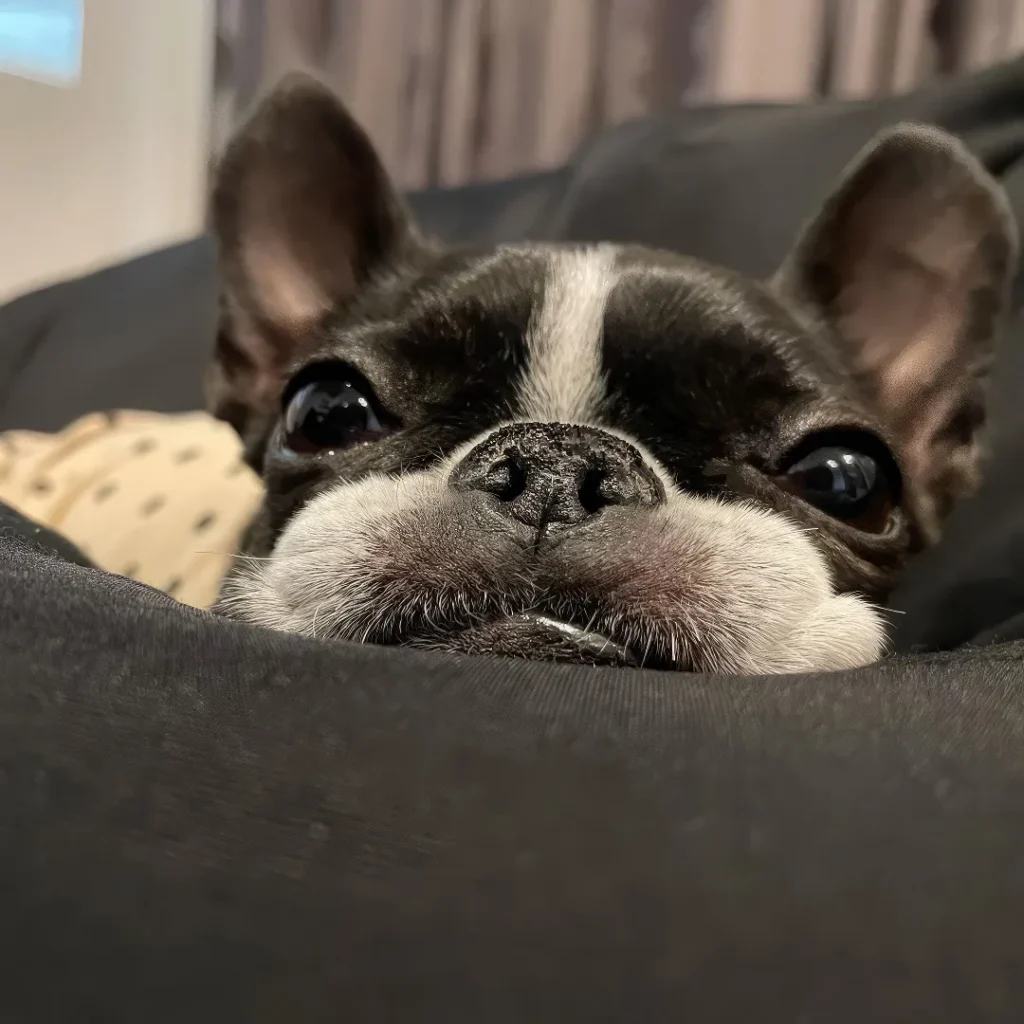
Boston Terrier Grooming & Shedding
Boston Terriers wear that neat little tux, and their coat is as tidy as it looks short, fine, and not a heavy shedder. Still, a quick weekly brush makes a big difference. I like a soft bristle brush or a rubber grooming mitt; five minutes on the sofa and you’ll see those tiny hairs come off while you spread natural oils through the coat. It keeps their skin happy and their coat glossy. My neighbor’s Boston practically melts when the mitt comes out it’s like doggy spa time.
Baths every 4-8 weeks are perfect for most Bostons. If mine rolls in something questionable (why is it always right after a bath?), I’ll do a gentle rinse in between with a mild dog shampoo. Rinse thoroughly, keep water out of those big, expressive eyes, and dry them well especially the face and chest. Face folds need daily attention: I use a soft, slightly damp cloth to wipe the nose wrinkles, under the eyes, and around the mouth, then pat dry. I skipped the folds for a couple of days once and noticed a faint odor lesson learned. Clean and dry prevents irritation and yeast.
Nails grow faster than you think. Aim for every two weeks, or at least monthly; if you hear clicking on the floor, it’s time. I’m a fan of a nail grinder because it’s harder to hit the quick, but clippers work fine if you go slowly and reward generously. For ears, a monthly clean is a good baseline. Add a few drops of dog ear cleaner, massage the base, and let them shake. Wipe the outer ear with cotton never go deep with swabs. If you spot redness or a yeasty smell, call your vet.
Quick extras that help: a weekly tooth brushing (Bostons can be prone to dental crowding), a dab of paw balm if pads seem dry, and a lint roller by the door for those surprise hairs on black pants. A quality diet with omega-3s can also support skin and coat.
Regular grooming doesn’t just prevent infections it builds trust. My Boston now leans into the brush and snoozes while I tidy his face. Those calm, everyday moments are where the sweetest bonds grow.
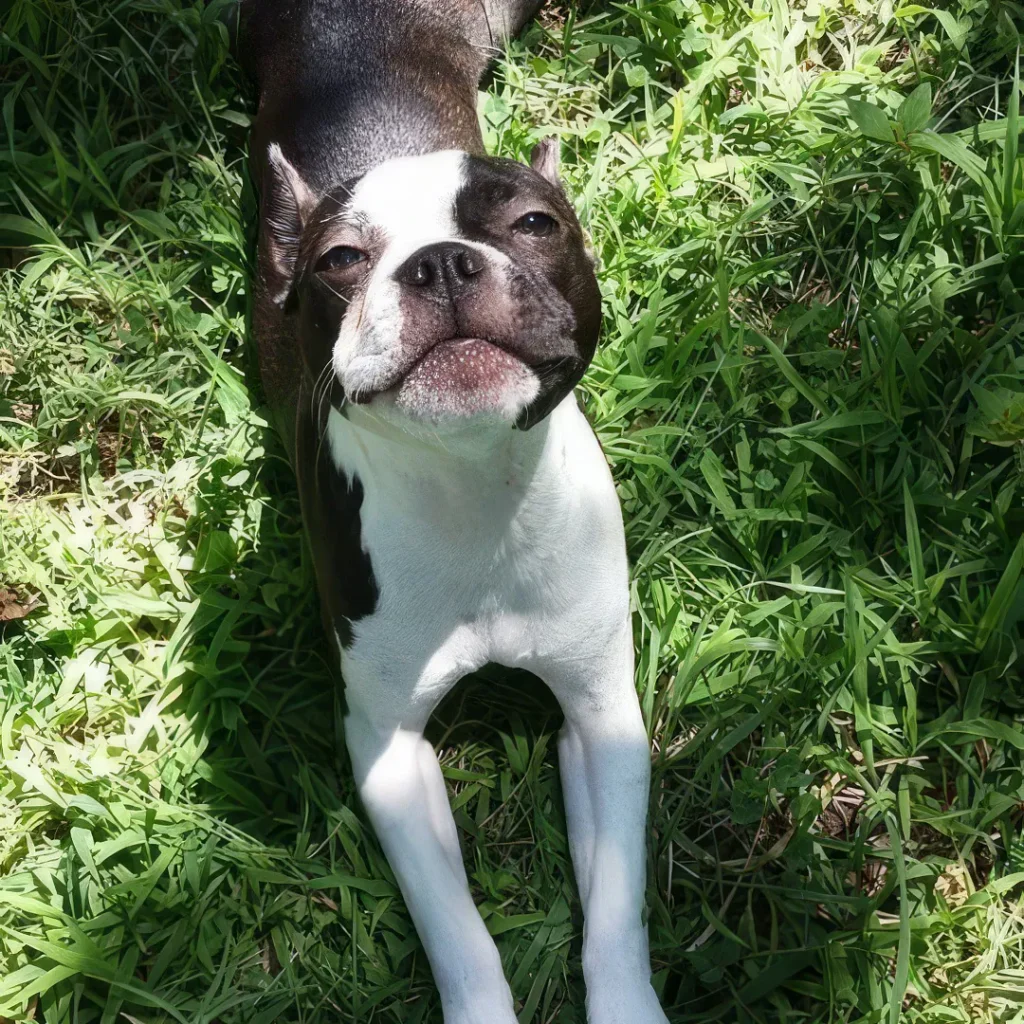
Do Boston Terriers Bark a Lot?
In my experience, Boston Terriers aren’t big barkers compared to some other breeds, but every dog has their own voice. Most Bostons save their bark for a reason usually to let you know someone’s at the door or a squirrel dared to cross the yard. They’ve got a bit of a watchdog streak and will speak up to protect their people and their space. Around the house, though, I notice they’re more likely to “comment” with little huffs, snorts, and happy wiggles than launch into a full chorus. My friend’s Boston, Penny, practically tap dances with her front paws when she’s excited to play one tiny “boof,” then a whole lot of wiggle butt.
They can bark during play, but a lot of their excitement comes out through their body language zoomies, pogo stick jumps, and those hilarious snorts. That said, some Bostons do tip into excessive barking, often when they’re bored, under exercised, or overstimulated by what’s happening outside. When that happens, your best move is to reduce the triggers and set them up for success. Close the blinds if the window is their gossip station, turn on a fan for white noise, or give them a stuffed Kong at delivery time. I once kept a “bark diary” for a week and realized the 4 p.m. delivery trucks were our hot spot blinds down, problem mostly solved.
Training wise, ignore attention seeking yaps and reward calm the second it shows up. Teach a “quiet” cue by marking and treating those tiny moments of silence after a bark, then gradually lengthen the quiet time. Pair it with an alternate behavior like “go to your mat,” so they have a job when life gets exciting. And don’t yell back dogs often take that as you joining the fun. With a little management and consistency, most Boston Terriers settle into being charming commentators rather than loudmouths.
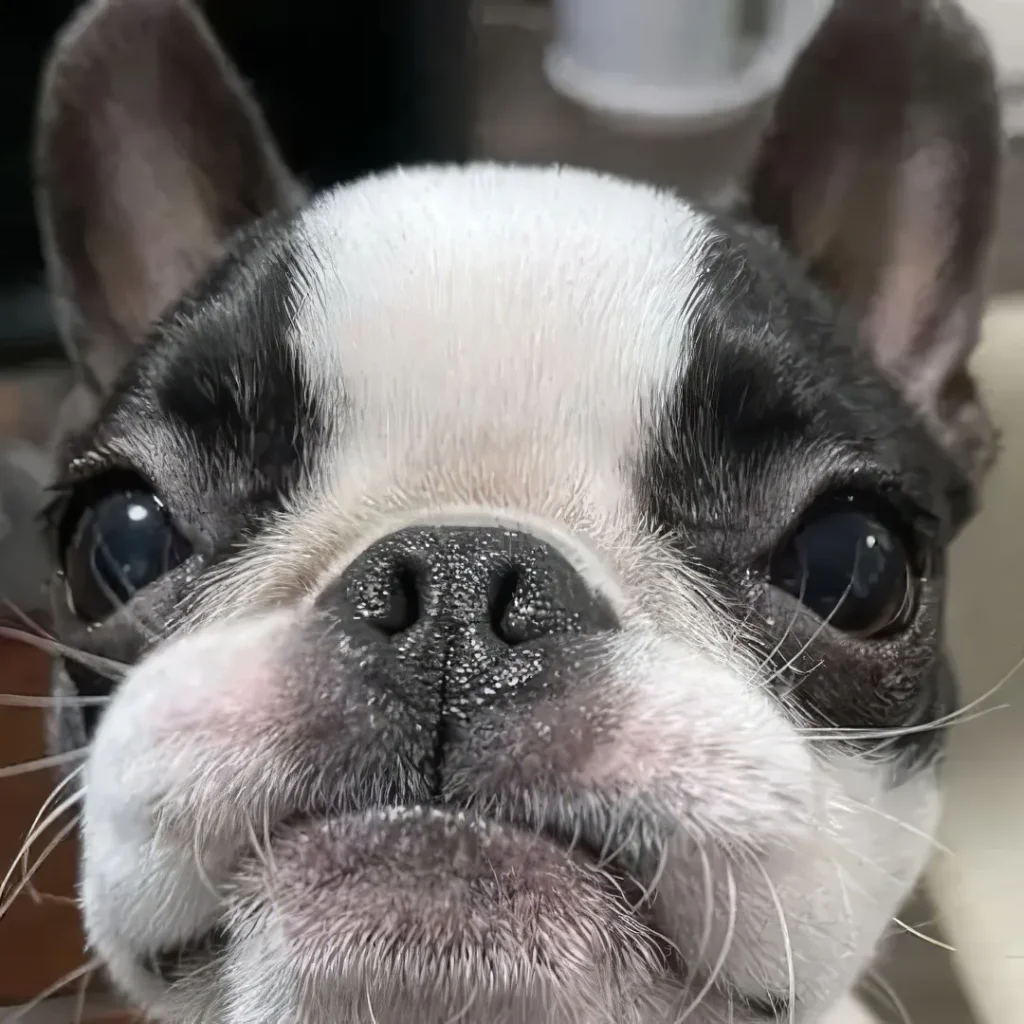
Average Weight and Height of a Boston Terrier
Boston Terriers are wonderfully compact and well proportioned little athletes. In terms of height, females usually stand around 40 cm tall, while males are about 43 cm (roughly 16-17 inches). I remember measuring my friend’s Boston by having her stand nice and straight against a wall, then marking the spot at the withers (that bump between the shoulders) and checking with a tape measure. She looked very proud of herself, as if she’d just qualified for the Olympics. https://en.wikipedia.org/wiki/Boston_Terrier
Weight wise, adult Bostons fall into three tidy categories: under 7 kilograms, 7-9 kilograms, and 9-11 kilograms (think roughly under 15 lb, 15-20 lb, and 20-24 lb). All three ranges can be perfectly healthy depending on your dog’s frame. Don’t chase a number watch the shape. You should be able to feel the ribs with light pressure and see a gentle waist when looking from above. I use the bathroom scale trick: weigh yourself, then pick up your Boston and weigh again, and do a quick subtraction. It’s not glamorous, but it works.
Their look is part of the charm: small square heads, short tails, and petite ears that give them a neat, tidy silhouette. That compact build makes them easy to carry up stairs or scoop into the car, but it also means extra calories show up fast. I like to measure meals, keep treats tiny, and balance playtime with short walks. If you’re shopping for a harness or coat, take those measurements with you these little blocky chests can surprise you on sizing!
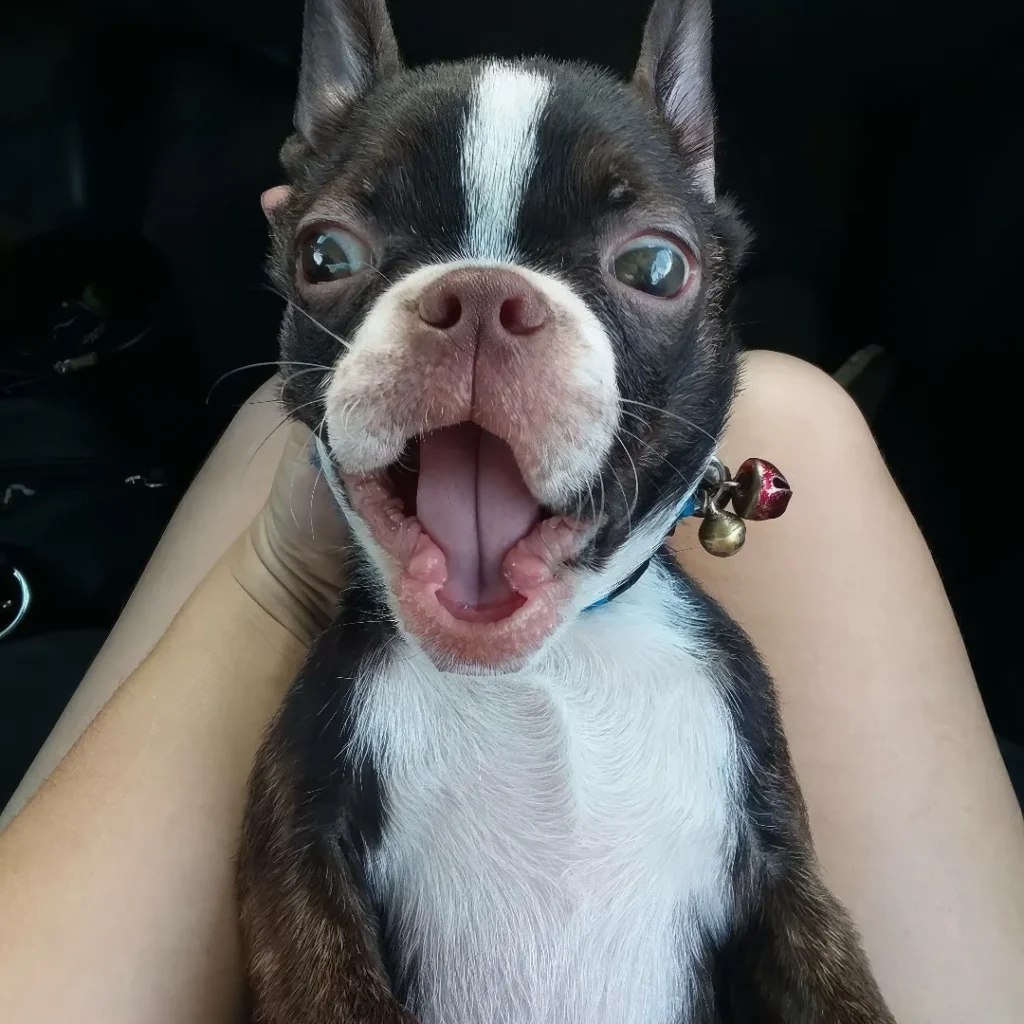
Are Boston Terriers easy to train?
Short answer: yes most Boston Terriers are little smarty pants with big hearts, which makes training feel more like playtime than hard work. They do best with early socialization and a good puppy class, just like any other pup. Getting them out to meet friendly dogs, new people, and different places helps them grow into confident, polite companions. I still remember my first class with a Boston pup who pranced over a tiny agility tunnel like he’d won an award then promptly fell asleep in my lap.
Because they’re eager to please, Bostons are a solid choice for first time dog owners. Keep sessions short and upbeat five to ten minutes at a time is perfect. Use tasty, pea sized treats as rewards, pair them with a cheerful “yes!” or a clicker, and sprinkle in plenty of praise. They’re sensitive little souls, so skip harsh corrections; a gentle redirect and a fresh start go much further. If your Boston starts to get stubborn or turns into a wiggle worm, take a quick break, then try again with something easier to win back their confidence.
A few practical tips I swear by: do a quick potty break or a short sniffy walk before training to take the edge off their zoomies. Introduce calm exposure to new sounds and surfaces shopping carts, doorbells, metal grates and reward curiosity. For house training, a steady routine and a cozy crate work wonders. One of my Bostons learned to ring a bell by the back door in a weekend (we celebrated like we’d won the lottery). On leash, a comfy harness and rewards for walking by your side will tame that “hello, world!” enthusiasm.
Teach basics like sit, down, stay, and leave it, then have some fun with tricks spin, high five, even “take a bow.” They love the mental workout. And if something isn’t clicking, simplify the task or change the reward. With kindness, consistency, and plenty of socialization, Boston Terriers shine and they’ll make you laugh while they do it.
How Do Boston Terriers Behave? A Look at Their Temperament and Personality
If you’ve ever met a Boston Terrier, you know they have a talent for making you smile. Most Bostons are playful, good natured little comedians who seem to think every stranger is a future best friend. I once watched a Boston at our neighborhood café do a full body wiggle for the barista until she surrendered a biscuit pure charm in action. They tend to get along beautifully with people and other animals, and they’re surprisingly tolerant for such spirited pups.
They’re also bright and quick to learn, which makes training feel more like a fun game than a chore. Keep sessions short and upbeat, and you’ll be amazed at how fast they pick up tricks spin, high five, even a dramatic “play dead” for a laugh. Because they love to entertain, I like to keep a few simple routines ready when friends visit. It’s part party trick, part mental workout, and it keeps that lively mind engaged.
Not every Boston runs on the same energy setting, though. Some are little clowns with zoomies on a timer, while others carry themselves with a tiny, tuxedoed air of dignity. My friend’s Boston, Beans, would bounce like a pogo stick during greetings; meanwhile, my neighbor’s older girl, Mabel, preferred to sit beside you like a polite dinner guest, paws crossed. Both were equally affectionate and deeply people oriented. They’re sensitive souls, too raise your voice and they might look wounded so gentle guidance works best. Lots of praise, a soft tone, and clear routines go a long way.
While Boston Terriers were once bred for fighting, today they’re lovers, not fighters. Still, that old spark can flicker during intense play or when another dog gets too pushy. I like to offer quick breaks, a favorite toy, or a redirect to a simple cue like “watch me.” With good socialization and positive training, their natural friendliness shines through, and you end up with a cheerful, outgoing companion who makes friends everywhere they go.

Do Boston Terriers Have Common Health Issues?
Boston Terriers are tough little charmers, but they do come with a few healthcare quirks. They’re more prone to certain problems than many small breeds, especially with their eyes and joints. You may hear about things like cherry eye (that red, bulging gland in the corner of the eye), cataracts and glaucoma (cloudy or painful eyes), corneal ulcers (scratches on the surface), deafness, patellar luxation (kneecaps that slip), and heart murmurs. I still remember my friend’s Boston, Bean, sprinting through the yard and catching a bit of grit in her eye she was squinting by dinner. A quick vet visit and drops later, she was fine, but it reminded me how easily those big, expressive eyes can get irritated.
Eye care is a big deal with this breed. I make a habit of doing a quick “eye check” every evening no drama, just a glance for redness, squinting, pawing, or any cloudiness. I also keep a small bottle of vet approved saline in my bag to rinse out dust after windy walks. If anything looks off, I don’t wait; eyes can go from “hmm” to “uh oh” fast. For hearing, I like to teach basic hand signals anyway it’s helpful if a Boston has partial deafness or just decides to ignore you at the park. With knees, watch for skipping steps or sudden hopping after zoomies; keeping them lean and nails trimmed, plus some non slip rugs at home, can make a surprising difference.
Because of their flat little faces, breathing and heat management require extra care. I use a harness instead of a collar to reduce pressure on the airway and plan walks in the cooler parts of the day. On hot or humid afternoons, we do short potty breaks and save playtime for indoors with a fan running. Water breaks, shade, and taking it slow are the name of the game. Regular vet checkups are your best friend for catching murmurs or eye changes early, and pet insurance never hurts with a breed that likes to keep you on your toes. With a bit of proactive care, Boston Terriers can live happy, goofy, snort filled lives that are totally worth the effort.
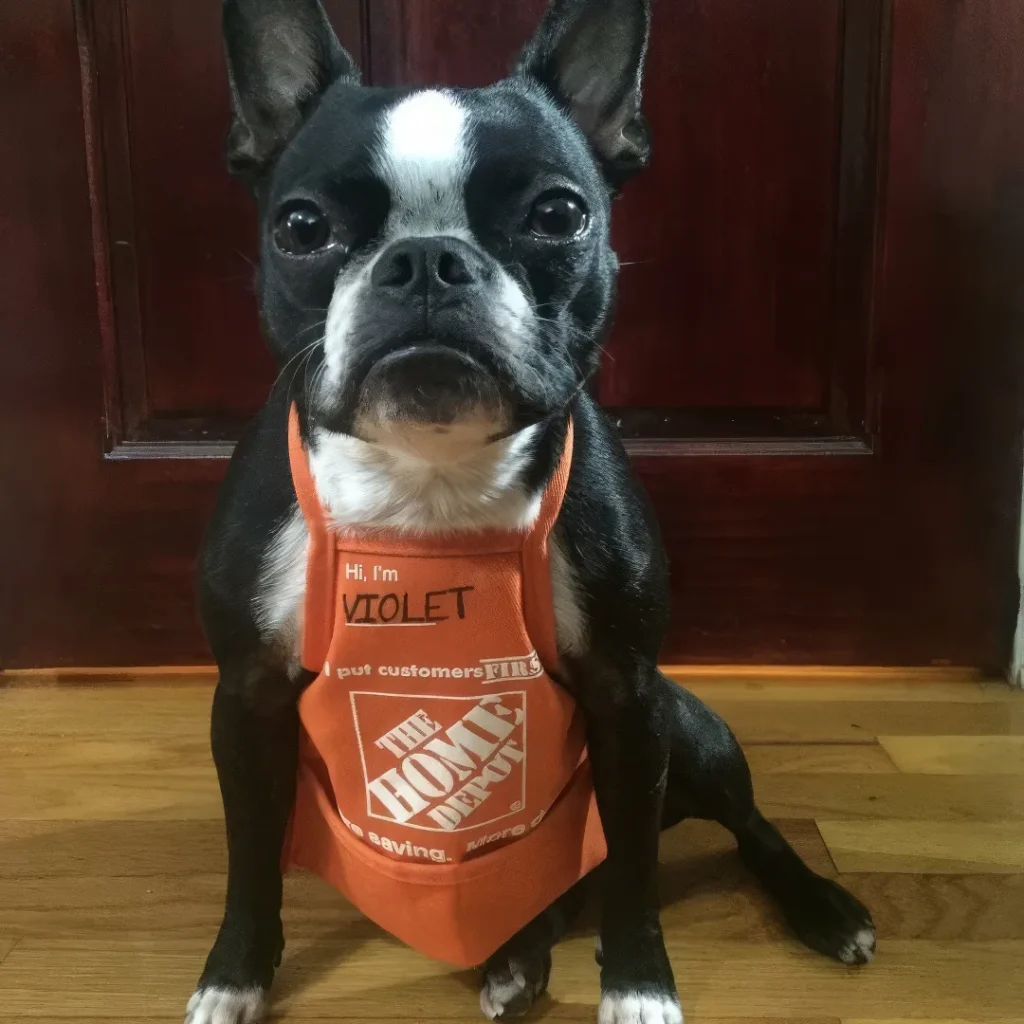
How Long Do Boston Terriers Live?
I’ll never forget my neighbor’s Boston Terrier, Dot, who celebrated her 14th birthday with a wobbly party hat and a determined trot around the block. She wasn’t the fastest anymore, but her eyes were bright and she still tried to chase every squirrel. Stories like Dot’s are pretty common with this breed. According to the American Kennel Club, Boston Terriers live about 11-13 years on average, and some happily toddle on to around 15.
A lot of what determines their lifespan comes down to the usual trio: genetics, diet, and lifestyle. Smaller dogs, like Bostons, generally enjoy longer lives than larger breeds, which gives them a nice head start. From there, it’s about the little daily choices. Keeping them at a healthy weight is huge extra pounds can sneak up on these compact, sturdy bodies. I learned this the hard way with a foster Boston who adored snacks; swapping to measured meals and crunchy veggies for treats made a real difference in his energy and waistline.
Good habits go a long way: regular vet checkups, a balanced diet, and consistent but sensible exercise. Short walks, a spirited game of fetch, and a couple of puzzle toys to work that clever little brain can keep a Boston feeling young. Because of their short snouts, I’m careful with heat and overexertion early morning strolls in summer, plenty of water, and lots of shade. And don’t overlook dental care; a quick tooth brushing routine can help their overall health more than most people realize.
With a bit of care, plenty of play, and a dash of stubborn Boston charm, you can expect many happy years together often well into those double digits.
How Much Should a Boston Terrier Eat?
I learned early on with my Boston that “just a handful” can turn into an extra pound faster than you think. These little comedians love their food, so a bit of structure goes a long way. Start with high-quality dog food that’s appropriate for your dog’s age, and measure meals rather than eyeballing them. The smaller your Boston, the lighter the serving should be my friend’s petite girl eats noticeably less than my sturdier boy, and both are perfectly healthy.
How much you feed really depends on your dog’s body weight, size, age, activity level, and even metabolism. A zoomie prone youngster will burn more than a couch cuddling senior. Puppies need more frequent, smaller meals, while adults generally do well with two scheduled feedings. Whatever the stage, make sure their diet is rich in essentials: proteins for muscle, fats for energy and coat health, plus plenty of water, minerals, and vitamins. I keep a scoop in the bag and adjust slightly based on how their waistline looks ribs should be easy to feel but not sticking out.
Treats are fun, but go easy. Too many snacks can lead straight to obesity, and Boston Terriers are clever enough to beg like pros. I try to keep treats to under ten percent of their daily intake, and I break training treats into tiny bits. The American Kennel Club recommends avoiding soy, grains, corn, potatoes, and rice, as these may trigger allergies in some dogs. If you’re changing foods, do it gradually over a week to keep tummies happy. And when in doubt, ask your vet for a portion target based on your dog’s current condition nothing beats a personalized plan for keeping that Boston belly trim and those big eyes bright.
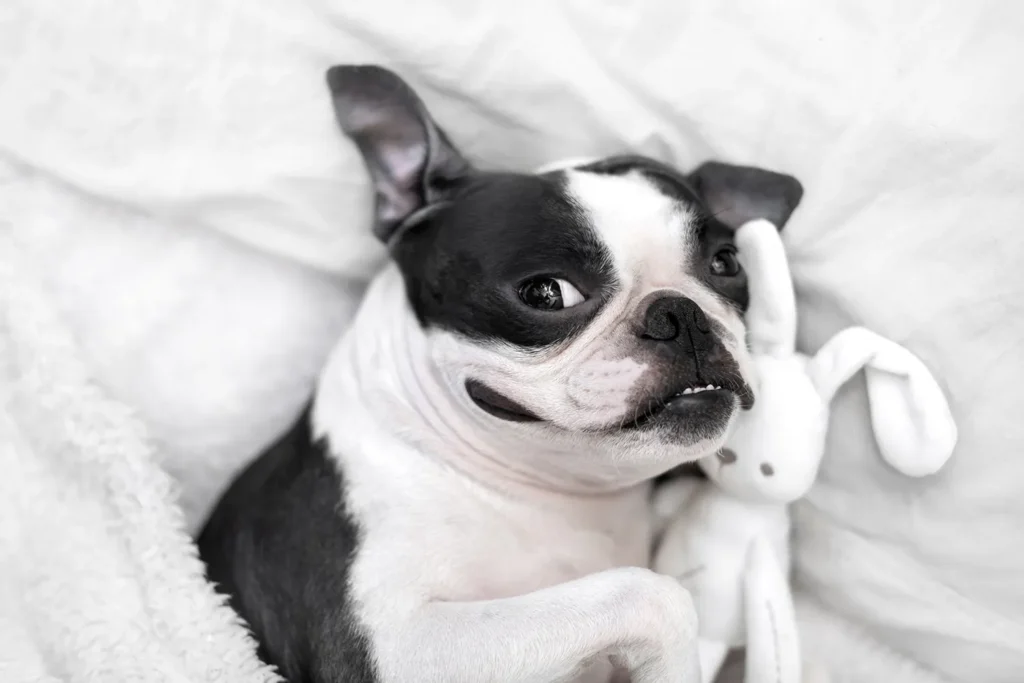
Boston Terrier FAQs: Snuggles, Alone Time & More
Are Boston Terriers cuddly?
Absolutely. Most Bostons are expert snugglers and will happily spend a rainy Sunday plastered to your side like a warm little heater. Mine will burrow into my hoodie and sigh dramatically, as if to say, “Finally, my spot.” Those close up moments aren’t just sweet they’re good for both of you. Gentle cuddle time can lower stress for your pup and boost those feel good bonding hormones. If you’ve got a Velcro Boston, it helps to teach cues like “up” and “off,” and to give them a cozy bed or blanket of their own for when you need your lap back. I like to invite cuddles after a walk or training session snuggles seem even better when we’ve already had some fun and they’re ready to settle.
Do Boston Terriers suffer from separation anxiety?
They really thrive on human connection, so being left alone can make some Bostons uneasy. It’s usually not extreme, but it can happen. The trick is to build independence early and kindly. I started with “fake departures” grabbing my keys, stepping out for 30 seconds, and coming right back. Slowly, I worked up to a few minutes, then longer stretches. A comfy crate or safe zone, a long lasting chew, or a food puzzle can help turn alone time into “reward time.” I also do a calm, sniffy walk before I leave so my dog is relaxed, then come and go without big emotional fanfare. If your Boston shows signs of real distress excessive barking, pacing, accidents check with a positive reinforcement trainer or your vet for a plan. Doggy daycare or a midday sitter a few times a week can also make a world of difference.
Are Boston Terriers ideal for first time dog owners?
Yes, most definitely. Bostons are bright, affectionate, and usually eager to learn, which makes training feel more like a game than a chore. Their coats are easy to maintain, they’re social butterflies, and they tend to pick up basics like sit, stay, and polite leash manners quickly short, fun sessions work best. They can be a little sensitive, so gentle guidance beats stern corrections every time. My friend’s first dog was a Boston, and she said the hardest part wasn’t training at all it was resisting those big, pleading eyes at dinner. Create a routine, reward the good choices, and you’ll be off to a great start.
Are Boston Terriers good swimmers?
Some are, some aren’t it depends on training, comfort, and overall health. Many can paddle a pool length and back, but they should never be left alone in the water or asked to swim for too long. I always use a snug canine life jacket with a handle, start in shallow water, and keep sessions short and positive. If your Boston seems unsure, let them wade and splash first; confidence often comes with practice. Watch for signs of fatigue and take lots of breaks. Rinse after pool time to keep their skin and coat happy. And if your pup decides sunbathing on the pool steps is more their speed? That counts as a victory too.
Disclaimer:
This article is for informational purposes only and doesn’t replace professional veterinary or training advice. Always consult a certified vet or dog trainer for guidance specific to your pup.
